Wayne Ensrud grew up in Luverne, Minnesota, a tiny prairie town in the southwestern part of the state near South Dakota. Grazing just outside of town are herds of bison, on prairie that was home to the native Dakota Sioux. Nearby is the tiny Blue Mound Wayside Chapel, which seats just eight. The boy never appeared destined to become an artist. During what was a tumultuous childhood, he had spent his summers since the age of twelve on various labor jobs. First he was a ditch digger on the local roads. Later, he worked in a steel mill and a cement plant. And as soon as he got his driver’s license he drove a truck to pick up eggs and milk from the local farms. Art was far from his mind. His primary art appreciation was for the skillful custom pin-striping he observed being painted on the trucks.
With his powerful Norwegian physique, Ensrud dreamed of become a professional football player. That dream evaporated after a career-ending injury in high school. Fortunately, it was in the home of his first girlfriend that he appreciated the watercolors of her mother, who had studied at the Art Institute of Chicago. This led him to experiment with a drawing class at the Carnegie Library, run by Mary Renfro, wife of the owner of “Renfro’s 5 & 10 Cent” store. The experience encouraged him to produce some drawings for his high school paper and yearbook. But it was hardly a foundation to become a serious artist. Nevertheless, after this most brief of encounters with art, Ensrud was determined to attend the Minneapolis School of Art (now the Minneapolis College of Art and Design).
During Ensrud’s first year at the Minneapolis School of Art, in November and December of 1952, Oskar Kokoschka served as the guest lecturer for the school’s “Artist and Society” series. Art historians are typically surprised to learn that Kokoschka made several extended visits to the school. In fact, he spent far more time in Minnesota than any other place he visited in America. Ensrud, an eighteen-year-old who had never heard of Kokoschka, suddenly found himself in rapt attention as the master delivered his talks. Although Ensrud had been prepared to hear another dry academic treatise, he was quickly captured by a master who rejected the analytical in favor of a highly personal approach. Kokoschka saw himself as a catalyst for making the act of seeing a powerful emotional experience, which he expressed in the German existential concept of “erlebnis.” For the first time, the young student heard someone speak enthusiastically of a life in art offering experiences that were at once visual and spiritual, exciting and profound… experiences that would lead to not only to a highly-individualized form of expression but to true self-discovery.
Kokoschka’s two-month symposium left an impression upon Ensrud that was profound and lasting. He even took a job in the school’s lunchroom so that he could sit and talk further with the master. In the years that followed he had lasting discussions with other guest teachers such as Myer Shapiro, Buckminster Fuller, Josef Albers, Jacques Lipchitz, and Jacques Barzun; and he become particularly friendly with Ben Shahn.
After Kokoschka’s departure, Ensrud continued his original course objective in graphic design, and landed an after-school job as a letterer for a sign-making company. He even designed a machine to print on three-dimensional objects, such as vending machines. By his senior year he was working as an illustrator for the Minneapolis Star & Tribune. Still, it was Kokoschka’s philosophy and paintings that continued to haunt him, and by his senior year, in 1956, he was certain he wanted to break from illustration and become a painter. After graduation, he even returned to attended Kokoschka’s second series of lectures, in the fall of 1957.
Armed with even more determination to become a painter, he accepted the invitation of one of his college instructors, Julia Pearl, to move to California’s Bay Area. Here he lived with Pearl and her husband, Ivan Magdrakoff, also an artist. Ensrud’s senior year was to have been primarily under the tutelage of Pearl, but because she departed for California a year earlier, he was left to his own explorations, a virtual independent study. “I was possibly the first student at the Minneapolis College of Art and Design ever to receive my degree by essentially being allowed to have my own studio space,” remarks Ensrud. “Maybe this fortuitous event explains the reason for my individualism and independent attitude.”
In Berkeley, Ensrud soon became immersed in the art library of the University of California, where he discovered more about the lives and works of Kokoschka as well as Egon Schiele and his other heroes, such as Paul Klee and Josef Albers. This was also a prolific period of drawing and painting of the figure. Necessity, however, called for him to accept a position at the University of California at Berkeley as a graphic designer and Art Director of Motion Pictures and Television for all nine campuses. In 1960, his film, “Computers and the Mind of Man” won several awards.
In 1961, Ensrud’s first trip to Europe’s museums further solidified his ultimate goal of becoming a painter. Upon returning to New York, friends steered him to acting, and he appeared in six off-Broadway plays. The actor Kirk Douglas was sufficiently impressed to offer him a screen test. Instead, he took a one-year stint as the art director for Channel 13 WNET New York where he changed the look of public television from dour to dynamic.
Throughout this series of practical jobs, Ensrud continued painting until he reached a point when, in 1963, he felt compelled to seek out Kokoschka in Switzerland. Although Kokoschka had founded his School of Seeing in Salzburg in 1953, Ensrud had no intention of attending as student. Despite success in film and television, he remained unfulfilled as a painter. His quest was deeper. The reunion with Kokoschka was emotionally charged. “For ten years, Kokoschka had been on my mind. Owing to the books in Berkeley’s art library, and my absorption of the art in European museums, my painting had begun to make more sense to me. But I was lacking that complete immersion, that confidence to make the final leap. Suddenly, I found myself before Kokoschka in a moment of complete capitulation, and broke down crying. He understood immediately. He had such empathy that he began crying too!”
Ensrud’s commitment to painting was not the result of a gradual evolution. Rather, it was an epiphany experienced with Kokoschka. From this point on, he would make extended visits with the master every year, who accepted him as if he was an adopted son.
Back in New York, Ensrud continued to paint while also teaching film animation at the Pratt Institute from 1968 through 1971. After that final teaching stint, he dedicated his time completely to painting. “That reunion with Kokoschka in 1963 was a turning point,” says Ensrud. “After that point I was driven to paint. All I did was draw, draw, draw.” On my annual stays with Kokoschka, he did all the talking, and I listened.” From Kokoschka, Ensrud had come to understand that painting was a metaphysical act, charged by the spirit. Kokoschka would caution his protégé, “You shouldn’t paint unless the spirit moves you. And when it does, drop down on your knees and give thanks!”
Ensrud may well be considered Kokoschka’s living legacy, for he inspired him to dig deeper than other young contemporary artists, most of whom had been misled into thinking that a focus of massive energy and emotion were enough to become a great painter. Soon, the master’s protégé had become empowered with a sensibility of treating colors like musical instruments, cycling through every instrument in the musical score, from flute to bassoon. Ever since, Ensrud has layered and opposed his colors, instinctively controlling the movements they can impart; and, like tasting fine wine, their rhythm inevitably flows forth. “It’s not intellectual,” he says, “I’m not an epic painter. I’m a lyric painter.” And therein lays the great difference between Ensrud and many contemporary artists who pursue conceptualism. Ask Ensrud what he is thinking when he paints, and he’ll tell you to first get rid of the word, “think.” “I go in blank,” he says, “I have an objective and a feeling, but there is no plan.” Rhythm is critical to Ensrud. As one flowing with the music, he is attuned to chance strokes. Gradually, the image reveals itself.
Ensrud speaks and writes eloquently about his philosophy and his art, lulling one into feeling they are speaking directly with Kokoschka himself: “There is a rhythmical arrangement to the dance,” says Ensrud. “It’s not that I’m so interested in space itself. Rather, I’m interested in pulsation. That’s what keeps me painting. Otherwise, the painting would become just another variation of what others have already done. The point is to bring a dead piece of canvas to life. All living matter pulsates, but most people can’t see it. Kokoschka saw life pulsating in the landscape as well as in people. He made me realize that I had an important job to do. And that’s to remain true to capturing this indefinable magical quality. In painting portraits, too, I just try to get out of the way and let the sitter emanate. In this way I mirror the psychic dance between myself and the sitter. In the end, it’s about music, and not one’s objective recognition of the subject.”
Like Kokoschka, Ensrud is not a draftsman-painter but a painter’s painter. That is, he is a classic Expressionist who, owing to his total absorption in the subject and the moment, reacts quickly and intuitively as he attacks the canvas. He instinctively draws with a staccato line and paints with a bravura brushstroke. He especially acknowledges that another key to success came when he fully grasped Kokoschka’s concept of how color could generate a push-and-pull power between background and foreground. On his extended stays in Austria, Ensrud would become energized by Kokoschka’s enthusiasm over the numerous landscapes and cityscapes, which Ensrud often painted from the roof of his hotel. He recalled a visit when Kokoschka, upon seeing one of Ensrud’s views of Salzburg, exclaimed, “I wish to God I had painted that!” On another visit, Kokoschka was so moved by one of Ensrud’s pastel portraits of a Belgian girlfriend that he demanded she sit for him, too, exclaiming, “I must paint her portrait!”
“In its highest workings intuition becomes inspiration that reveals great fundamental truths and supreme mysteries,” says Ensrud. “A door is opened to the most sublime inspirations regarding the supreme truths of the universe. The intuition grasps ideas from the mysterious Infinite Mind and presents them to the imagination in its essence rather than in a definite form, and then our image-building faculty gives it a clear and definite form which it presents before the mental vision which we then vivify with life by letting our thought dwell upon it, thus infusing our own personality.”
While Ensrud realizes that his great fortune is a Nordic temperament that falls squarely in the joyous realm, he is highly guarded not to be fooled into making paintings that are simply visually pleasing. After all, he says, “That’s my inner tempo being manifested on the canvas.” Thankfully, here is art with sureness and unflinching honesty in every stroke. Ensrud’s kind of music continues to be a living testament to one of the twentieth century’s greatest Expressionist masters, Oskar Kokoschka.
Erotica: Ensrud's Experience of Aesthetic Ecstasy
-
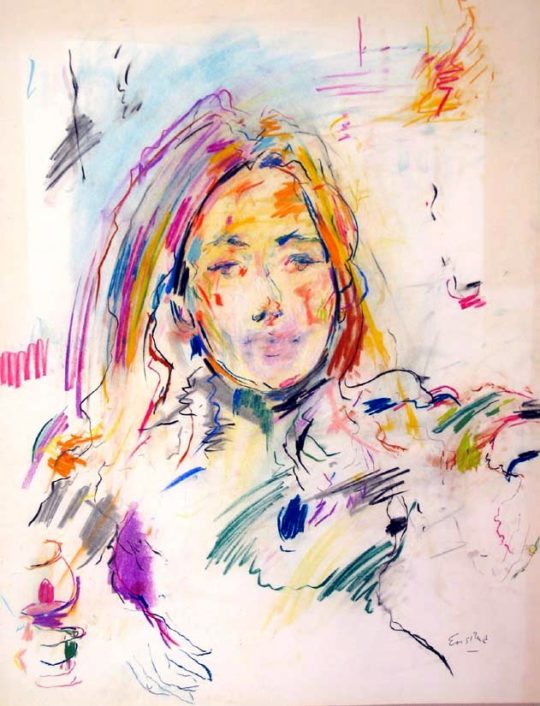
A Young Woman, 1985
22 x 28 inches (55.88 x 71.12 cm) -
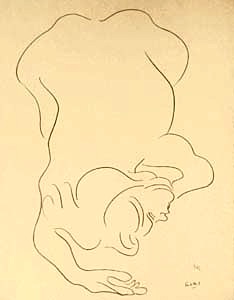
Crouching Nude, 1970
12 x 18 inches (30.48 x 45.72 cm) -
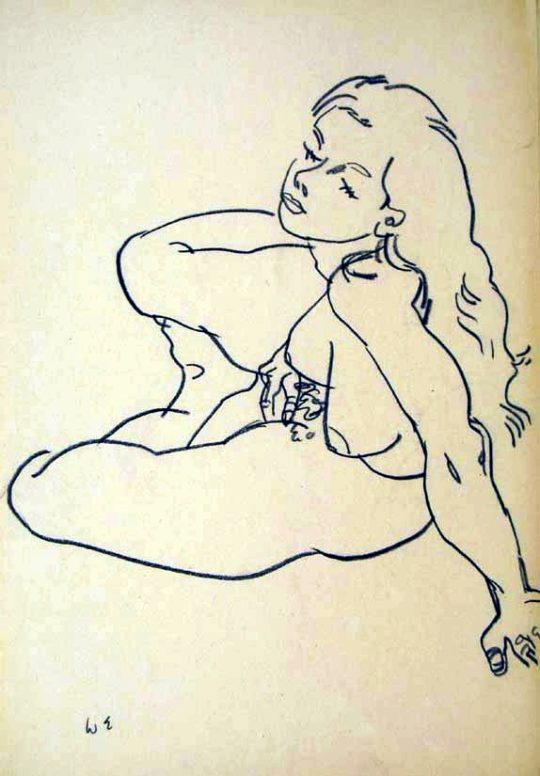
Erotica No.19, 1970
12 x 18 inches (30.48 x 45.72 cm) -
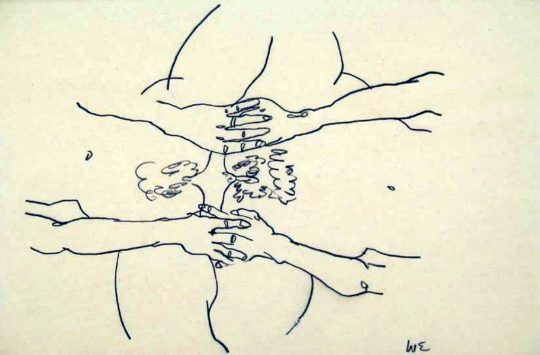
Erotica No.4, 1970
12 x 18 inches (30.48 x 45.72 cm) -
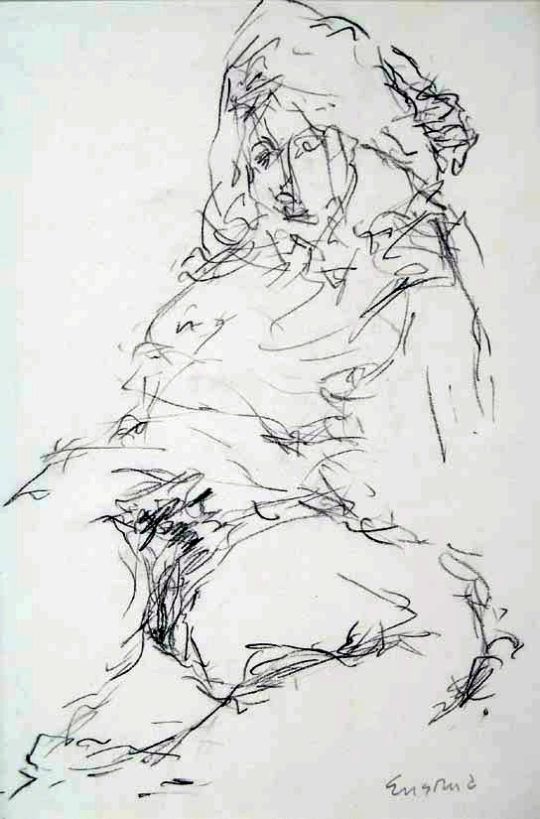
Erotica No.41, 1970
12 x 18 inches (30.48 x 45.72 cm) -
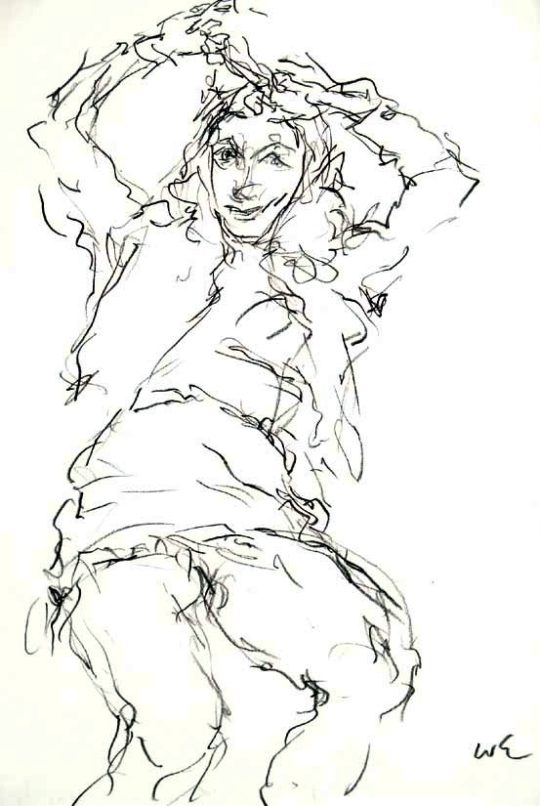
Erotica No.45, 1970
12 x 18 inches (30.48 x 45.72 cm) -

Figure No.1, 1993
24 x 20 inches (60.96 x 50.8 cm) -
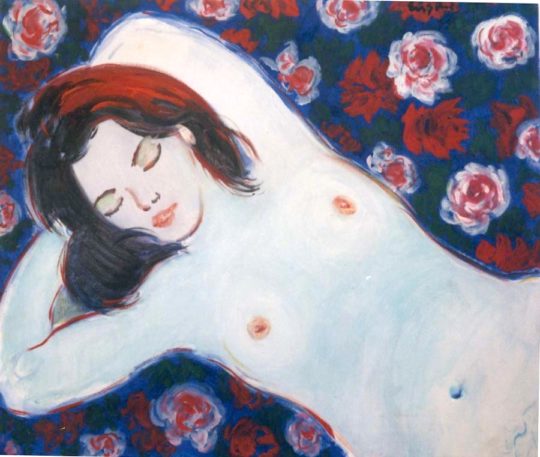
Figure No.11, 1995
27 x 23 inches (68.58 x 58.42 cm) -
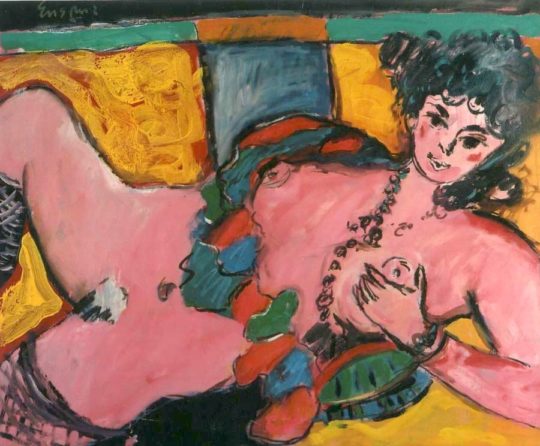
Figure No.12, 1990
27 x 23 inches (68.58 x 58.42 cm) -
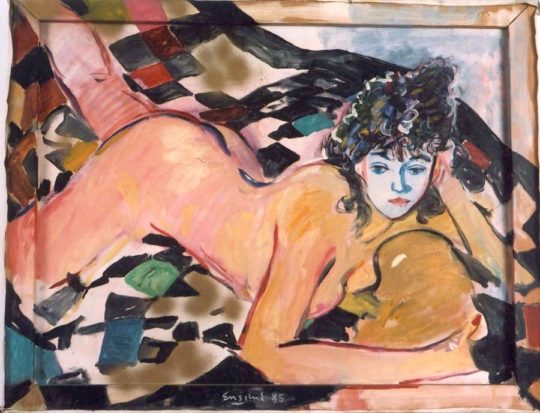
Figure No.14, 1985
30 x 24 inches (76.2 x 60.96 cm) -

Figure No.26, 1985
36 x 46 inches (91.44 x 116.84 cm) -
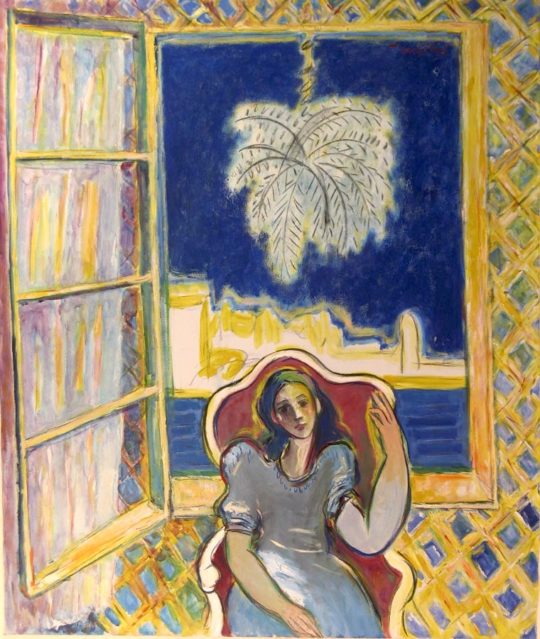
Figure No.28, 1985
36 x 42 inches (91.44 x 106.68 cm) -
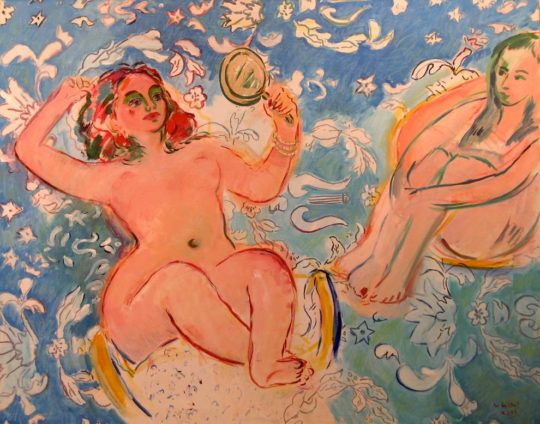
Figure No.29, 1989
50 x 40 inches (127 x 101.6 cm) -
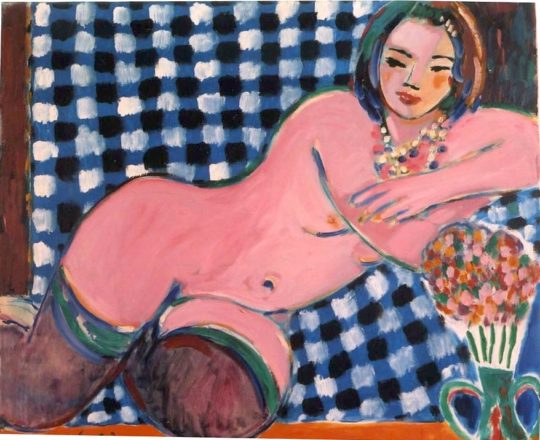
Figure No.3, 1993
27 x 23 inches (68.58 x 58.42 cm) -
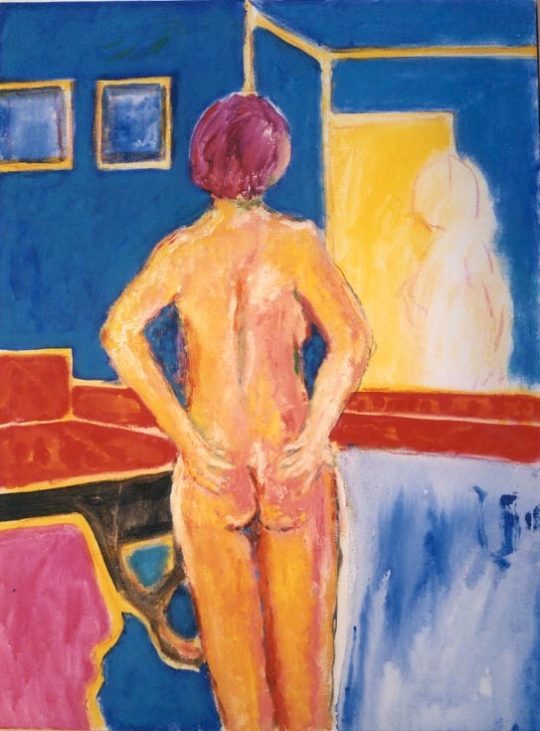
Figure No.31, 1989
30 x 36 inches (76.2 x 91.44 cm) -
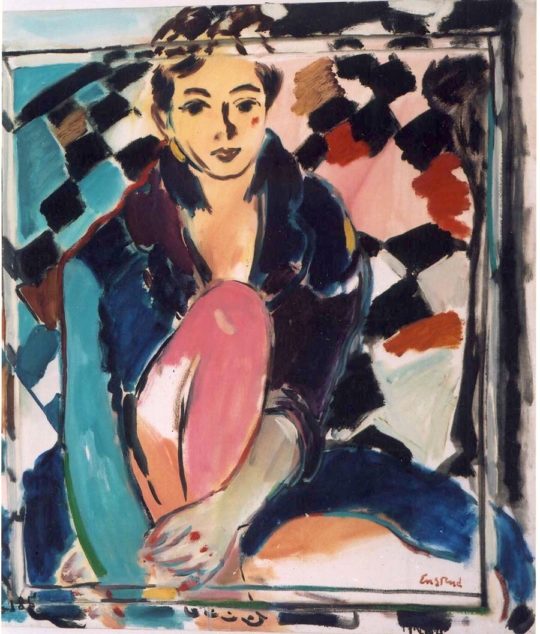
Figure No.4, 1990
23 x 25 inches (58.42 x 63.5 cm) -
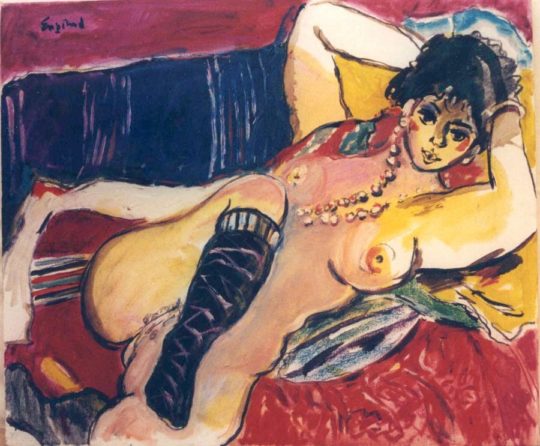
Figure No.7, 1990
27 x 23 inches (68.58 x 58.42 cm) -

Goddess Series: Abundance, 2006
68 x 66 inches (172.72 x 167.64 cm) -
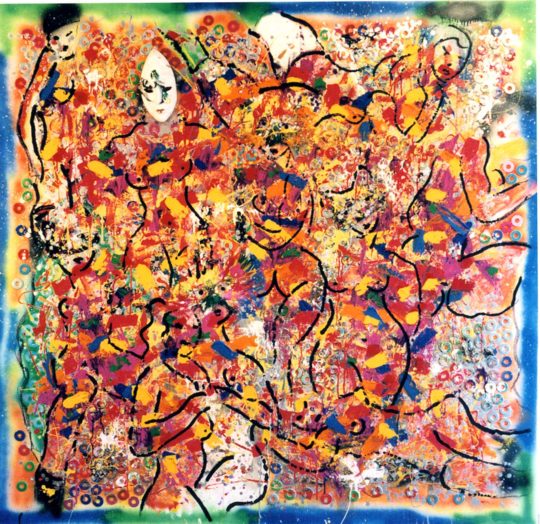
Goddess Series: Desire, 2006
68 x 66 inches (172.72 x 167.64 cm) -
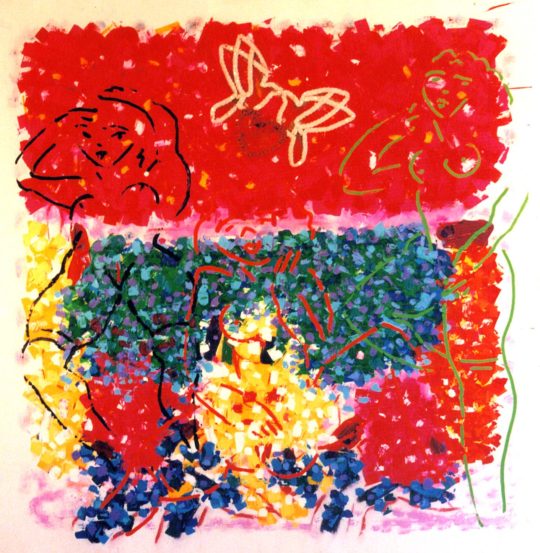
Goddess Series: Fire, 2006
60 x 68 inches (152.4 x 172.72 cm) -
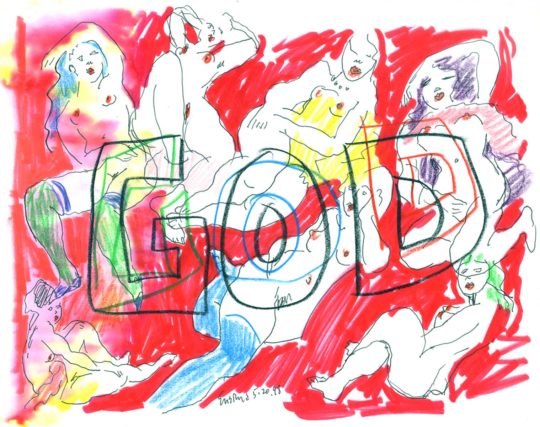
Goddess Series: God, 1998
11 x 8.5 inches (27.94 x 21.59 cm) -
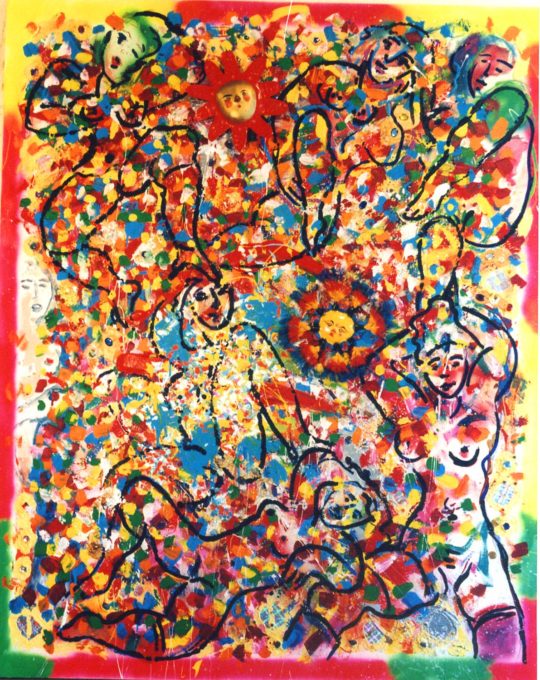
Goddess Series: Jewel, 2006
58 x 72 inches (147.32 x 182.88 cm) -
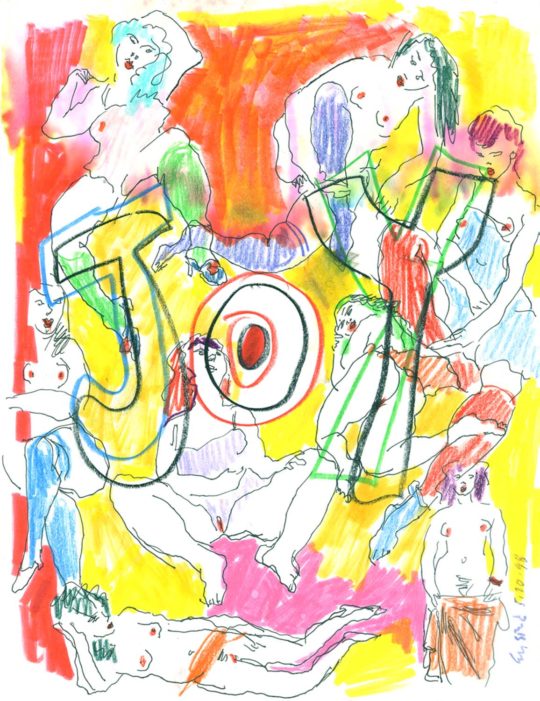
Goddess Series: Joy, 1998
8.5 x 11 inches (21.59 x 27.94 cm) -
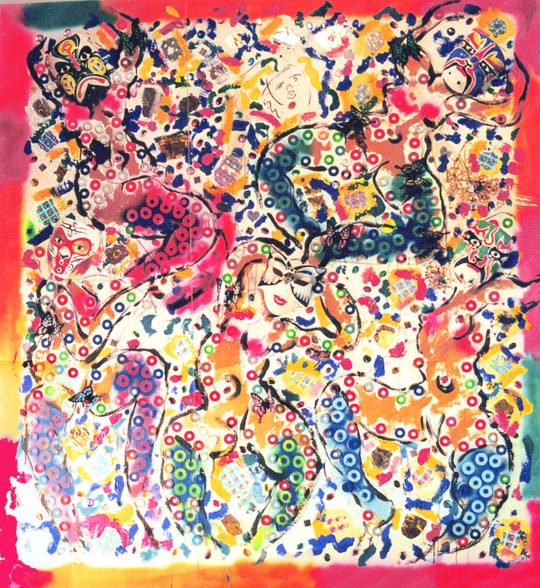
Goddess Series: Masks, 2006
66 x 72 inches (167.64 x 182.88 cm) -

Goddess Series: Mystery, 2006
66 x 68 inches (167.64 x 172.72 cm) -
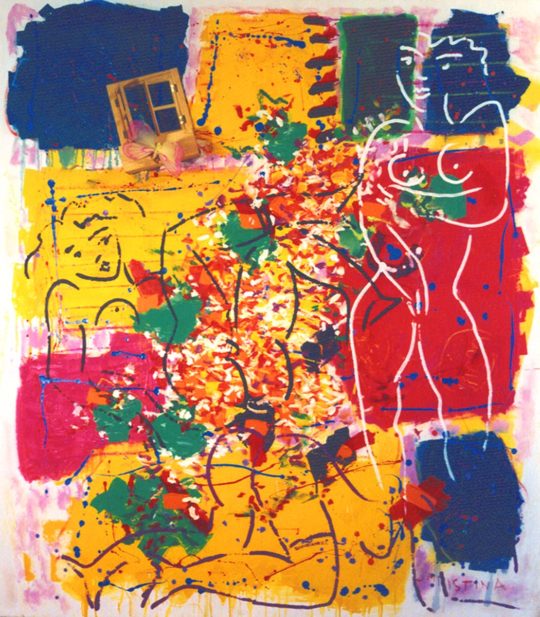
Goddess Series: Source, 2006
60 x 68 inches (152.4 x 172.72 cm) -

Goddess Series: Unity, 2006
80 x 68 inches (203.2 x 172.72 cm) -

Goddess Series: Vitality, 2006
60 x 68 inches (152.4 x 172.72 cm) -

Goddess Series: Yes, 1998
11 x 8.5 inches (27.94 x 21.59 cm) -

Nude study, 1980
20 x 26 inches (50.8 x 66.04 cm) -
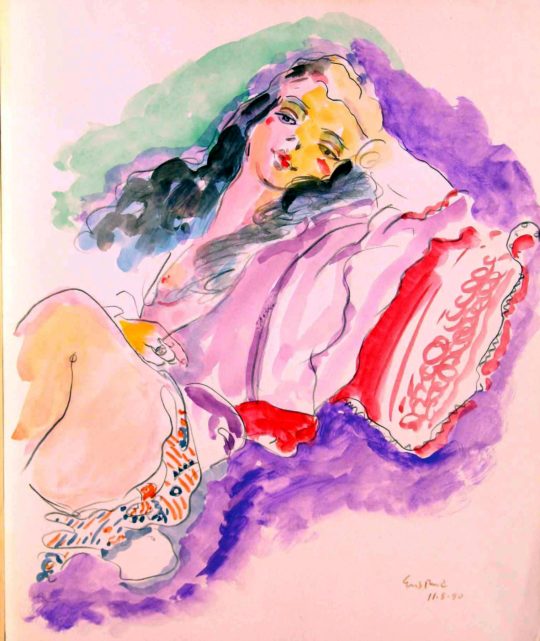
Nude study No.131, 1990
14 x 17 inches (35.56 x 43.18 cm) -
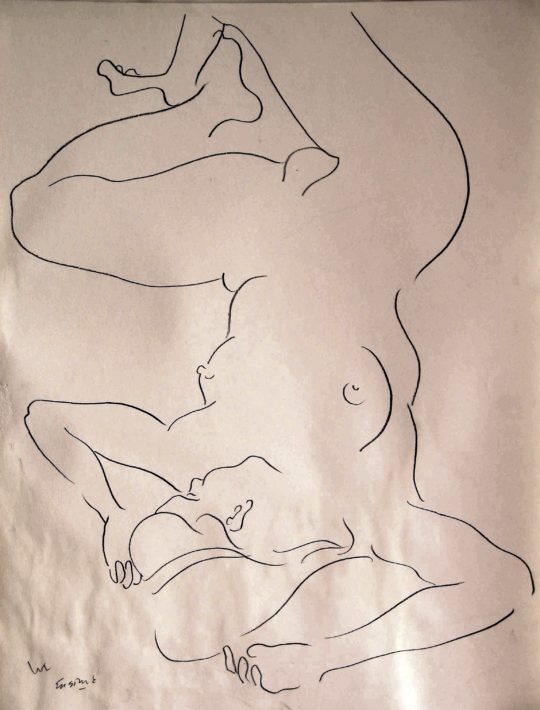
Nude study No.23, 1970
19 x 24 inches (48.26 x 60.96 cm) -

Nudes on the Beach, 1994
60 x 51 inches (152.4 x 129.54 cm) -
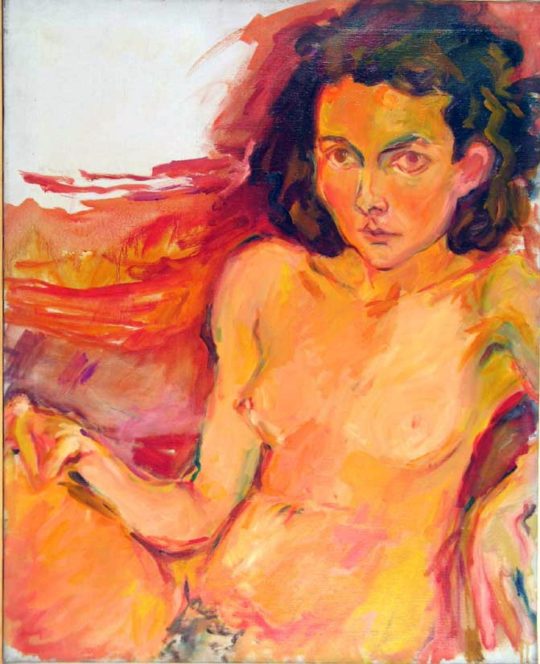
Timberlake Wertenbaker, 1968
26 x 32 inches (66.04 x 81.28 cm)
-

A Young Woman, 1985
22 x 28 inches (55.88 x 71.12 cm) -
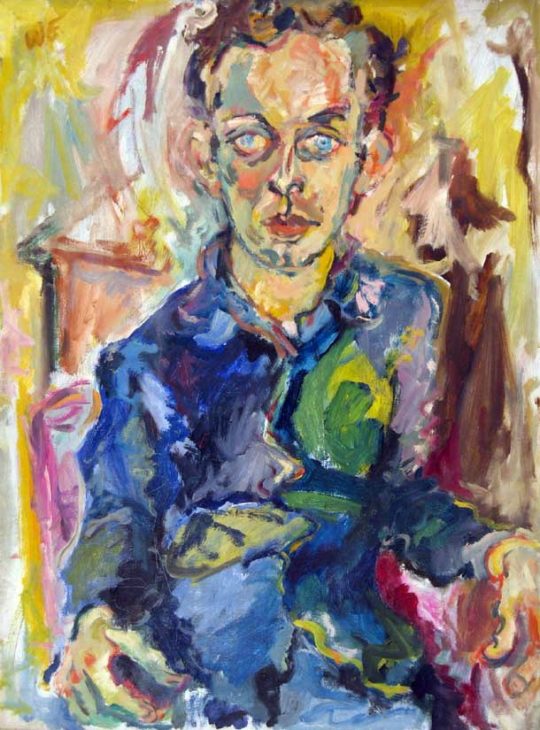
Bill Leach, Actor, 1966
24 x 32 inches (60.96 x 81.28 cm) -

Crouching Nude, 1970
12 x 18 inches (30.48 x 45.72 cm) -

Erotica No.19, 1970
12 x 18 inches (30.48 x 45.72 cm) -

Erotica No.4, 1970
12 x 18 inches (30.48 x 45.72 cm) -

Erotica No.41, 1970
12 x 18 inches (30.48 x 45.72 cm) -

Erotica No.45, 1970
12 x 18 inches (30.48 x 45.72 cm) -

Figure No.1, 1993
24 x 20 inches (60.96 x 50.8 cm) -

Figure No.11, 1995
27 x 23 inches (68.58 x 58.42 cm) -

Figure No.12, 1990
27 x 23 inches (68.58 x 58.42 cm) -

Figure No.14, 1985
30 x 24 inches (76.2 x 60.96 cm) -

Figure No.26, 1985
36 x 46 inches (91.44 x 116.84 cm) -

Figure No.28, 1985
36 x 42 inches (91.44 x 106.68 cm) -

Figure No.29, 1989
50 x 40 inches (127 x 101.6 cm) -

Figure No.3, 1993
27 x 23 inches (68.58 x 58.42 cm) -

Figure No.31, 1989
30 x 36 inches (76.2 x 91.44 cm) -

Figure No.4, 1990
23 x 25 inches (58.42 x 63.5 cm) -

Figure No.7, 1990
27 x 23 inches (68.58 x 58.42 cm) -

Goddess Series: Abundance, 2006
68 x 66 inches (172.72 x 167.64 cm) -

Goddess Series: Desire, 2006
68 x 66 inches (172.72 x 167.64 cm) -

Goddess Series: Fire, 2006
60 x 68 inches (152.4 x 172.72 cm) -

Goddess Series: God, 1998
11 x 8.5 inches (27.94 x 21.59 cm) -

Goddess Series: Jewel, 2006
58 x 72 inches (147.32 x 182.88 cm) -

Goddess Series: Joy, 1998
8.5 x 11 inches (21.59 x 27.94 cm) -

Goddess Series: Masks, 2006
66 x 72 inches (167.64 x 182.88 cm) -

Goddess Series: Mystery, 2006
66 x 68 inches (167.64 x 172.72 cm) -

Goddess Series: Source, 2006
60 x 68 inches (152.4 x 172.72 cm) -

Goddess Series: Unity, 2006
80 x 68 inches (203.2 x 172.72 cm) -

Goddess Series: Vitality, 2006
60 x 68 inches (152.4 x 172.72 cm) -

Goddess Series: Yes, 1998
11 x 8.5 inches (27.94 x 21.59 cm) -

Nude study, 1980
20 x 26 inches (50.8 x 66.04 cm) -

Nude study No.131, 1990
14 x 17 inches (35.56 x 43.18 cm) -

Nude study No.23, 1970
19 x 24 inches (48.26 x 60.96 cm) -

Nudes on the Beach, 1994
60 x 51 inches (152.4 x 129.54 cm) -

Timberlake Wertenbaker, 1968
26 x 32 inches (66.04 x 81.28 cm)
Art has a mission to perform. It should be a means of communication, with the same purpose as language. I do not believe in “art for art’s sake” – a pretty package but empty inside! That is idle chatter. Instead, a painting should be a means of establishing contact with others.
The artist has a responsibility to envision and embrace the whole world in a spirit of love — to see and rejoice in the grand unity of creation. Therefore, the artist paints for the spiritually starving; for an audience of the blind. A good painter should be able to paint anything — but a great painter is the servant of compulsions which are ordained by the very structure of the soul. He or she is not interested in policies but in values — this is our field of battle.
I believe in the miracle of the great blinding moment of illumination when the human spirit — radiating light and laughter, joy and love — nourishes the intuition. When your spirit trembles with joy then art has found its true form and place, and the artist can play like a fountain without strife, without even trying.
Art cannot be bound to a theology, theory, or system. It preaches nothing. It is a purifying factor. Its essence is joy and love, which unravels the tensions and relaxes the soul. The secret of art’s healing power is in the viewer and not the artist. The only measure is reaction!
In a world of change, one constant is the human gift of extending the boundaries of the human spirit ever-wider. And, therein lay the vocation of the creative artist: to capture his insights into that human spirit and manifest them in his art.
Current trends find some artists trying to saturate the world with their own anguish. This is thin fare for hungry viewers. Somewhere at the heart of things, artists are still lazy of spirit. They have not become desperate enough or determined enough. By a force of will, the lock on the door must be broken and the door must be knocked down in order to become the poet, the artist — the one who dares!
Man may travel around the world and colonize to the end of the earth – and yet never hear the singing of the universe.
Through expressing compassion and joy, art creates a possibility for others to experience joy and happiness — and this is a real service to mankind.
— Wayne Ensrud
The eroticism of the female nude has been a recurrent theme throughout the works of Wayne Ensrud. Ever since he attended a lecture in 1952 by Oskar Kokoschka, the great Austrian Expressionist, Ensrud has been dedicated to the act of seeing and painting as a powerful emotional experience. Kokoschka inspired Ensrud to dig deeper than other young contemporary artists, most of whom had been misled into thinking that a focus of massive energy and emotion were enough to become a great painter. Instead, Ensrud came to understand that painting was a metaphysical act, charged by the spirit. A review of Ensrud’s erotica leaves no wonder why Kokoschka considered him to be his only protégé.
For Ensrud, insight is far more important than the subject itself. He notices that when most people view a beautiful nude female model, their eyes are wide open but he regrets that they remain unconscious of her aura, her spirit. Sex is often the dominant thought. “Sex is about brief and often incredible transcendental moments,” says Ensrud. “But when I’m painting the model I feel and see vibrations, pulsations. It’s like music. I could gaze for hours. She is mysterious. She is pure seduction, yet there’s a certain purity of the relationship. I’m not thinking about her breasts, hips, and legs. I’m sensing her rhythm. I’m picking up her libido, and she knows it. And because she senses my absorption into her metaphysical space, she provides an openness — a gentle receptivity — to this higher range of vibrations.”
Although the stereotype of the artist having sex with his models may be true (Ensrud cites more than 135 women with whom he has had sex versus 122 for Casanova), when it comes to capturing them on canvas he enters another world. “I try to capture an experience of timelessness. The movement of my brush or pen is always flowing, never settling. It’s as if I am floating in a dream world where there is a suspension of time. And I never talk, often for hours, until I am finished. It is definitely a meditative state, an indescribable pushing toward the eternal. My feet aren’t on the earth, that’s for sure. I can only enter that zone when I am in the artistic act of capturing her essence; otherwise, the experience just can’t be conveyed.”
The subject may be erotica but Ensrud becomes so completely immersed that he prefers to refer to his paintings and drawings as “witnesses of various states of mind where I release and surrender myself to the spirit of the subject. I’m not a Buddhist or a Zen master but I can hold that transcendent state longer now than when I was younger. Maybe these are brief lightning flashes of how Buddha actually lived. I just know that the experience is a totally personal adventure that can only be taken alone.”
In the decades that Ensrud came to know Oskar Kokoschka, he says his master never talked about painting. “He had no answers,” says Ensrud, “only a directive: ‘Climb the mountain.’ He knew the truly great teachers don’t teach at all. They just exude. They ignite a fire in our consciousness. Kokoschka did speak eloquently about psychic energy, and I was a quick study. But in the end there is no one who can explain the experience of aesthetic ecstasy. After all, that’s why there’s art. The answer really lies in the reaction of the viewer. The viewer must respond with feeling.”
Selected Solo Exhibitions
2012 Able Fine Art, New York NY
2012 New Art Center, New York NY
2011 High Line Open Studios, New York NY
2010 Great Neck Arts Center, NY
2008 Sherry-Lehmann, New York NY
Great Neck Arts Center, NY
2007 Sherry-Lehmann, New York NY
Gardens Gallery Center, Palm Beach Gardens, FL
Duboeuf Cultural Museum, Romaneche-Thorins, France
2006 Sherry-Lehmann, New York NY
2005 Sherry-Lehmann, New York NY
2004 Sherry-Lehmann, New York NY
2003 Sherry-Lehmann, New York NY
Galerie des Artistes, Puerta Vallarta, Mexico
Ravsen Fine Art, New Canaan CT
2002 Sherry-Lehmann, New York NY
2001 Sherry-Lehmann, New York NY
Robert Mondavi Gallery, Napa Valley CA
Galleria Luna, Half Moon Bay CA
Louis Aronow Gallery, San Francisco CA
2000 Sherry-Lehmann, New York NY
Galleria Luna, Half Moon Bay CA
Christopher Hill Gallery, St. Helena CA
Ravsen Fine Art, New Canaan CT
1999 Sherry-Lehmann, New York NY
The Federation of Chateauneuf-du-Pape, France
1998 Sherry-Lehmann, New York NY
1997 Sherry-Lehmann, New York NY
Musee du Vin, Chateau Cos D’Estournel, Bordeaux, France
1996 Sherry-Lehmann, New York NY
1995 Sherry-Lehmann, New York NY
1994 Sherry-Lehmann, New York NY
1993 Sherry-Lehmann, New York NY
Horseneck Gallery, Greenwich CT
Gallery and Company, Tokyo, Japan
Artistic Galleries, Scottsdale AZ
Washington Avenue Gallery, Minneapolis MN
Silene Gallery, Boston MA
1992 Sherry-Lehmann, New York NY
Wally Gallery, Los Angeles CA
Money and Economy, Ft. Lauderdale FL
1991 Sherry-Lehmann, New York NY
Gallery and Company, Tokyo, Japan
Klabal Gallery, Minneapolis MN
1990 Sherry-Lehmann, New York NY
Galerie Damien, Paris, France
1989 Sherry-Lehmann, New York NY
Carmichael-Peterson Gallery, Minneapolis MN
Artbanque Gallery, Minneapolis MN
1988 Sherry-Lehmann, New York NY
Gallery ANA, Tokyo, Japan
Hallonen Gallery, Minneapolis MN
Klabal Gallery, Minneapolis MN
1987 Sherry-Lehmann, New York, NY
Ruffner Gallery, Grosse Pointe Farms MI
Relais du Margaux, Bordeaux, France
1986 Sherry-Lehmann, New York NY
Peach Tree Center, Atlanta GA
1985 Sherry-Lehmann, New York NY
Parker Gallery, Newport RI
1984 Virginia Lynch Gallery, Rhode Island
Sansiao Gallery, Tokyo, Japan
1983 Symon Gallery, Kansas City, Missouri
Gallery on the Square, Kansas City Missouri
1982 University of Connecticut
Buffalo Museum of Science NY
1981 Apogee Gallery, Boston MA
New England Center for Contemporary Art
1979 Bristol Museum of Art
Loring Gallery, Cedarhurst NY
1978 Simon’s Rock Early College
1977 South Hill Library, VA
1976 Maas Bros. Gallery, Tampa FL
The Gallery of Art, Panama City FL
1975 French Institute-Alliance Francaise, New York NY
1974 National Arts Club, New York NY
1973 Automation House, New York NY
1970 Modern Masters Gallery, New York NY
1961 Fine Gallery, San Francisco CA
Selected Group Exhibitions
2011 Benrimon Contemporary, New York NY
Designlawn Showcase, New York NY
2010 Thomas Jaeckel Gallery, New York NY
2009 Great Neck Arts Center, NY
1993 Beard Gallery, Minneapolis MN
1990 St. John’s University, St. Cloud MN
1985 T.R. Gallery, New York NY
1983 Arras, East Trump New York NY
Sansiao Gallery, Tokyo, Japan
1982 Old State House Museum, Hartford CT
Slater Museum, Norwich CT
Buffalo Museum of Science, NY
University of Connecticut
Summers Gallery, New Orleans LA
Pioneer Square Gallery, Seattle WA
Owl Gallery, San Francisco CA
Weinger Gallery, New York NY
1981 Stuart Gallery, New York NY
Circle Gallery, Chicago IL
Meyers Gallery, Chevy Chase MD
1980 Village Gallery, New York NY
University of Florida
1979 Gallery 306, Philadelphia PA
1977 Eric Schindler Gallery, Richmond VA
1976 Haller Gallery, New York NY
1975 Five Uptown Independent Artists, New York NY
Haller Gallery, New York NY
1974 Five Uptown Independent Artists, New York NY
Picturline Gallery, Roslyn NY
1973 Five Uptown Independent Artists, New York NY
1972 National Arts Club, New York NY
1960 Oakland Art Museum, CA
1956 Minneapolis Institute of Art
Awards
Oscar d’Italia
Lever House Award
Minnesota Hall of Fame
Rothschild Design Award
Commandeur d'Honneur du Bontemps de Medoc et des Graves
Compagnon de Beaujolais
Grappileur de Beaujolais
Book References
Who’s Who In American Art
Who’s Who in the East
Men of Achievement
American Artists: An Illustrated Survey of Leading Contemporary Americans

